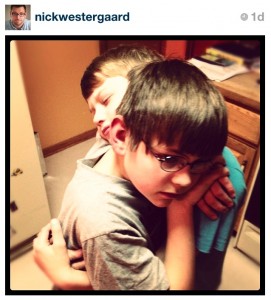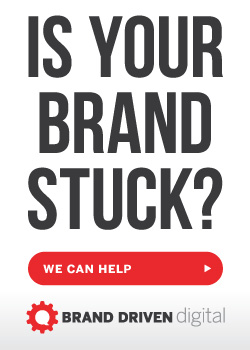There’s been a lot of talk about Instagram lately. Specifically what, if any, role the photo-sharing app should have as businesses build brands online. As new networks crop up left and right from Google+ to Pinterest to Path it’s easy to feel like there’s just too much to keep track of. However, I think there’s a place for Instagram.
Instagram currently boasts over 15 million users with over 200 million photos uploaded — that’s 15 photos per second. Users obviously love this simple iOS app that let’s you shoot photos from you iPhone or iPad, apply filters and some basic effects, and push these unique photos to Facebook, Twitter, Flickr, Tumblr, and Posterous.
Among these 15 million users you’ll also find several brands from various sectors experimenting with this new platform. Creating an account for a brand on Instagram is no different than creating a standard user account. There aren’t designated brand pages like Facebook and Google+ (and soon, Twitter).
Great. We can create profiles for our brands on any number of social networks but is ‘more networks’ always better? Sometimes isn’t ‘more’ just more? Why does Instagram matter for brands?
Closeness
 Since the early days of email marketing, I’ve always said there is a special closeness about being in someone’s inbox that is unparalleled. It’s a very personal place where you interact with family and friends and, if you opt-in, certain brands as well. This is extremely valuable real-estate in the mind of a customer.
Since the early days of email marketing, I’ve always said there is a special closeness about being in someone’s inbox that is unparalleled. It’s a very personal place where you interact with family and friends and, if you opt-in, certain brands as well. This is extremely valuable real-estate in the mind of a customer.
Beyond email, this argument of closeness is also helpful in encouraging brands to engage on social networks including Instagram. Imagine your brand’s photos appearing in the Instagram feed (like Facebook’s wall) alongside their friends’ kids and what they’re having for dinner. But what makes Instagram photos better than just sharing on Facebook or Twitter?
Everyone’s an Artist
I often contend that there’s an artist in everyone dying to get out. Some have the raw talent to help this art escape into expression. Instagram is noteworthy as it gives novices an easy way to make art out of little moments in life. This easy-to-use creative flair is also a key point of differentiation. As Facebook continues its massive adoption, many users feel that anyone can upload a plain old Facebook photo. Instagram gives you quick, bold strokes that make art out of seemingly mundane moments.
If this sounds like a soft and somewhat abstract case, consider how users regard an app at gives them this power. How many times have you heard friends say, “I love Instagram!” The closeness and general happiness surrounding this platform set the stage as prime real estate for your brand to engage.
Brands of All Shapes and Sizes
 A quick scan shows that brands of all shapes and sizes are testing the waters on Instagram. From large consumer brands like Pepsi and Starbucks (currently the most followed brand on Instagram) to boutique brands like Chobani and Warby Parker. Fashion and beauty brands with obvious visual appeal have planted flags here as well, such as Burberry and Aveda.
A quick scan shows that brands of all shapes and sizes are testing the waters on Instagram. From large consumer brands like Pepsi and Starbucks (currently the most followed brand on Instagram) to boutique brands like Chobani and Warby Parker. Fashion and beauty brands with obvious visual appeal have planted flags here as well, such as Burberry and Aveda.
News outlets seem to have made the jump to Instagram categorically with NBC, ABC, CNN, and NPR staking out at least one account. Many networks have multiple profiles for individual programs such as NBC, who maintains their core NBC News account as well as a page for the Today Show.
Political brands are also jumping in. On the eve of the Iowa caucuses, the Obama campaign — often an early social adopter in the political sector — nabbed a few headlines by standing up an Instagram account for sharing behind-the-scenes photos of the President getting ready for a live chat with supporters.
Instagram also shows promise for entertainment brands as well. Foo Fighters keeps fans updated from the road while Zooey Deschanel and Sons of Anarchy creator Kurt Sutter provide behind-the-scenes sneak peeks of their respective shows.
Beyond traditional brands, Instagram also allows you to create a deeper connection as a personal brand. MarketingProfs’ Ann Handley’s love of nature and family shines through from her account while Gary Vaynerchuk’s passion for sports is front and center.
Find a Simple Strategy
 So if there’s a place for you on Instagram, what do you do? Like engagement on all social networks, having a plan is key. What do you want to share here? What aspect of your brand fits the intimate and arty confines of Instagram?
So if there’s a place for you on Instagram, what do you do? Like engagement on all social networks, having a plan is key. What do you want to share here? What aspect of your brand fits the intimate and arty confines of Instagram?
Consumer brands should be cautious about filling the feed with boring product shots that followers could just as easily find on your website. Instead, look for ways to give special access like New Belgium Brewing does when they share new products and packaging. Along those same lines ABC News provided a backstage pass to the recent GOP presidential debates via Instagram.
One tool that brands do have in Instagram is the ability to use hashtags. Starbucks, for example, encourages users to tag photos they take using the hashtag #starbucks to track photographic mentions of the brand throughout Instagram. You can then push both your hashtag and photo through to Twitter as well as your Facebook Page (look for this option under ‘Account/Edit sharing settings’).
 Another option is to show a different side of your brand. Greek yogurt Chobani has several photos on their feed featuring presentations of charitable giving around the holidays.
Another option is to show a different side of your brand. Greek yogurt Chobani has several photos on their feed featuring presentations of charitable giving around the holidays.
One anecdotal observation — most of the brands I encountered were larger national brands as opposed to local brands. This could just be delayed adoption but I do think there are opportunities for small local businesses. Fine restaurants could post mouth-watering images of tonight’s special while the local independent bookseller could show new arrivals and readings. Not to mention the fact that you can geotag posts and push updates through to Foursquare.
A Few Drawbacks
Though hip, fun, and addictive, Instagram is not without its faults. Of course, there’s the iOS limitation. While rabid iPhone and iPad users have been quick to adopt the app, Instagram can expect exponential growth once it launches its long-awaited Android version. (Remember, 700,000 Androids are activated each day.)
The beauty of this app is its simplicity. However, what’s intuitive for individual users may feel a bit stripped down for brands looking for extra tools to help manage their online presence.
In Short
I feel that there are many brand-driven opportunities with Instagram. Is it managing another social network in an already busy work day for community managers? Yes, but there are synergies with Facebook and Twitter that you can utilize. Might Instagram be a better fit for fashion brands and news services? Easier perhaps but there’s always another side to your brand that you can express visually. This could even lead to a deeper connection with your followers. Is the ROI unclear? It’s as clear as it is for other social media channels, which incidentally can be just as cloudy as traditional media. We’re just used to giving traditional media a pass.
Get started by searching Instagram for other brands in your industry or related industries. If you find activity, follow them for awhile and see how they are using the platform. If no one’s there yet from your sector, maybe you could make an impact by being the first.
Is your brand using Instagram to connect with your community? Are you considering it in the coming year? I’d love to hear your thoughts on businesses using Instagram for brand building in the comments below.









